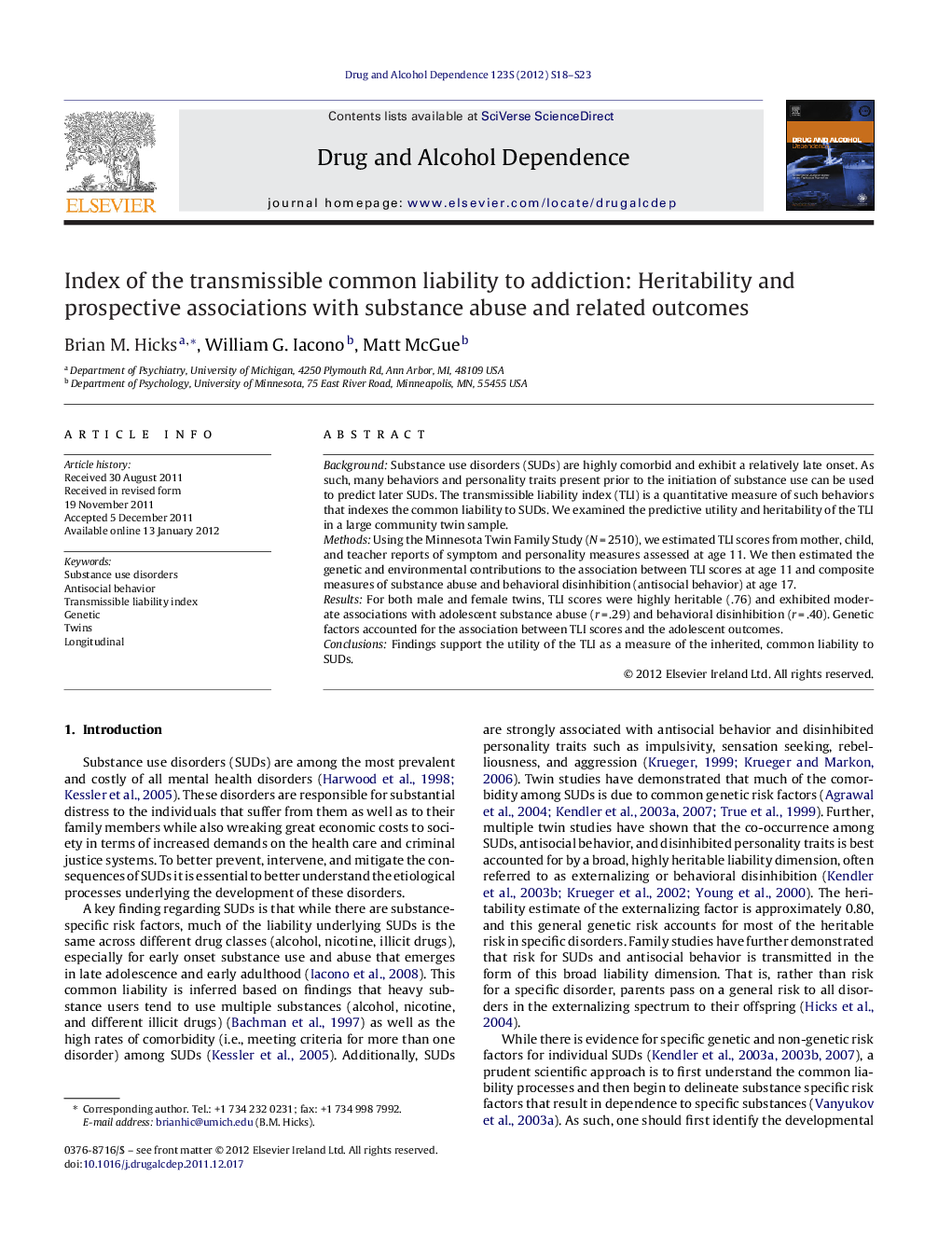| Article ID | Journal | Published Year | Pages | File Type |
|---|---|---|---|---|
| 1070120 | Drug and Alcohol Dependence | 2012 | 6 Pages |
BackgroundSubstance use disorders (SUDs) are highly comorbid and exhibit a relatively late onset. As such, many behaviors and personality traits present prior to the initiation of substance use can be used to predict later SUDs. The transmissible liability index (TLI) is a quantitative measure of such behaviors that indexes the common liability to SUDs. We examined the predictive utility and heritability of the TLI in a large community twin sample.MethodsUsing the Minnesota Twin Family Study (N = 2510), we estimated TLI scores from mother, child, and teacher reports of symptom and personality measures assessed at age 11. We then estimated the genetic and environmental contributions to the association between TLI scores at age 11 and composite measures of substance abuse and behavioral disinhibition (antisocial behavior) at age 17.ResultsFor both male and female twins, TLI scores were highly heritable (.76) and exhibited moderate associations with adolescent substance abuse (r = .29) and behavioral disinhibition (r = .40). Genetic factors accounted for the association between TLI scores and the adolescent outcomes.ConclusionsFindings support the utility of the TLI as a measure of the inherited, common liability to SUDs.
